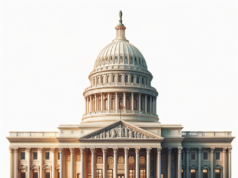
In recent years, the landscape of the American justice system has undergone significant transformations, driven largely by state law reforms aimed at addressing systemic issues. These changes have sparked debates across the nation, revealing both the potential for positive outcomes and the challenges that lie ahead. As states grapple with the complexities of justice reform, it is crucial to understand the motivations behind these changes, the specific legislative measures being implemented, and the broader implications for society.
Understanding the Landscape: The Need for State Law Reforms in the Justice System
The American justice system has long been criticized for its inequities, including racial disparities, excessive sentencing, and inadequate access to legal representation. High incarceration rates, particularly among marginalized communities, have prompted calls for reform. Advocates argue that the system often prioritizes punishment over rehabilitation, leading to cycles of recidivism and social disenfranchisement. The need for state law reforms has become increasingly urgent as public awareness of these issues grows, fueled by movements advocating for criminal justice reform, such as Black Lives Matter and the Campaign for Fair Sentencing. These movements have highlighted the necessity for a justice system that is not only fair and equitable but also effective in promoting public safety and community well-being.
Key Legislative Changes: A Comprehensive Overview of Recent State Law Reforms
In response to the pressing need for reform, numerous states have enacted significant legislative changes aimed at overhauling various aspects of the justice system. Key reforms include the decriminalization of certain non-violent offenses, such as drug possession, and the implementation of restorative justice practices that focus on rehabilitation rather than punishment. Additionally, many states have passed legislation to reduce mandatory minimum sentences, allowing judges greater discretion in sentencing. Other notable changes include the expansion of diversion programs for first-time offenders, increased funding for mental health and substance abuse treatment, and measures to enhance transparency and accountability within law enforcement agencies. These legislative efforts reflect a growing consensus that reform is necessary to create a more just and equitable system.
The Impact of Reforms: How State Laws Are Reshaping Justice Outcomes Nationwide
The impact of these state law reforms is already being felt across the nation, with early data suggesting positive trends in several areas. For instance, states that have implemented diversion programs report lower recidivism rates among participants, indicating that access to treatment and support services can effectively reduce reoffending. Furthermore, jurisdictions that have reformed sentencing laws are witnessing a decrease in prison populations, alleviating overcrowding and reducing the financial burden on taxpayers. Public safety metrics have also shown improvement in some areas, challenging the narrative that leniency in sentencing leads to increased crime rates. As these reforms continue to take root, they are reshaping the conversation around justice, emphasizing rehabilitation and community engagement over punitive measures.
Stakeholder Perspectives: Voices from Lawmakers, Advocates, and the Public
The discourse surrounding state law reforms is rich with diverse perspectives from various stakeholders. Lawmakers championing these reforms often cite the moral imperative to create a fairer justice system, while advocates emphasize the importance of addressing systemic inequalities that disproportionately affect marginalized communities. Public opinion appears to be shifting as well, with many citizens expressing support for reforms aimed at reducing incarceration rates and promoting rehabilitation. However, there are also voices of skepticism, particularly from those who argue that reforms may compromise public safety. Law enforcement officials and some community members express concerns about the potential for increased crime if punitive measures are relaxed. This multifaceted dialogue highlights the complexity of justice reform and the need for ongoing engagement among all stakeholders.
Challenges Ahead: Addressing Criticisms and Resistance to Law Reforms
Despite the momentum for reform, challenges remain. Critics of state law reforms often argue that they could lead to unintended consequences, such as increased crime rates or a lack of accountability for offenders. Resistance from law enforcement agencies and political opponents can also hinder progress, as some lawmakers prioritize tough-on-crime policies over reformative measures. Additionally, the implementation of new laws can be fraught with logistical challenges, including inadequate funding for necessary support services and training for law enforcement personnel. Addressing these criticisms and building a consensus around reform will require sustained dialogue, education, and collaboration among all stakeholders involved in the justice system.
Looking Forward: The Future of Justice in Light of Ongoing State Law Reforms
As state law reforms continue to evolve, the future of the American justice system remains uncertain yet hopeful. The ongoing dialogue surrounding these reforms presents an opportunity for a more inclusive and equitable approach to justice. Policymakers, advocates, and community members must work together to ensure that reforms are effectively implemented and that they address the root causes of crime and inequality. The success of these initiatives will depend on a commitment to monitoring outcomes, adapting strategies based on evidence, and fostering a culture of accountability within the justice system. As states pave the way for transformative change, the potential for a more just society is within reach, contingent upon the collective efforts of all stakeholders involved.
In conclusion, the unveiling of state law reforms is a pivotal moment in the ongoing quest for justice in America. These legislative changes reflect a growing recognition of the need for a more equitable and effective justice system, one that prioritizes rehabilitation and community well-being over punitive measures. While challenges remain, the potential for positive change is significant, and the voices of advocates, lawmakers, and the public will play a crucial role in shaping the future of justice in the United States. As we move forward, it is essential to remain vigilant, engaged, and committed to the ideals of fairness and equity that underpin a just society.





























































